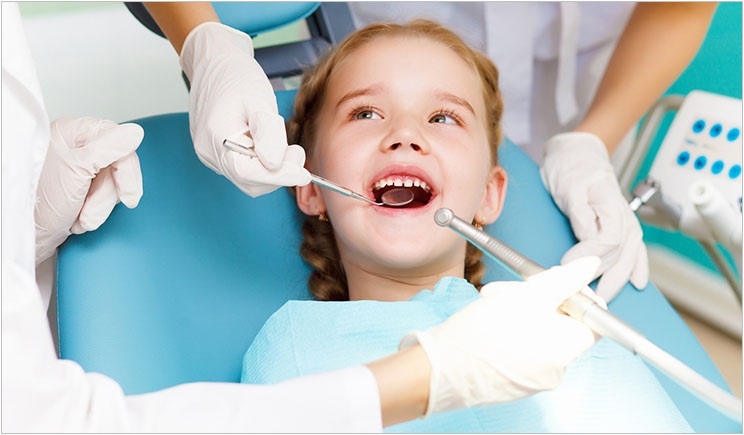
This February, dentistrytoday.com celebrates National Children’s Dental Health Month with news stories, interviews, and blogs all about safeguarding pediatric oral health. #NCDHM
Tooth decay remains the most prevalent childhood disease, even though it is entirely preventable. Access to care is a chief roadblock in ensuring pediatric oral health. That’s why the American Academy of Pediatric Dentistry (AAPD) works to enact change on a national level to better connect families and dentists.
When meeting with policymakers, the AAPD always emphasizes the following:
- The AAPD is committed to optimal oral healthcare for all children. This means establishing a dental home for a child by the age of one year.
- Pediatric dental practices are the backbone of oral healthcare for our nation’s children.
- On average, 70% of pediatric dentists participate in Medicaid or the Children’s Health Insurance Program (CHIP), comprising 25% of their patients.
- Pediatric dentists also provide significant amounts of free or discounted care.
The AAPD has a robust legislative and regulatory agenda for 2017, which is available online. The 2 highest AAPD priorities at the federal level are healthcare reform and funding for health professionals’ training.
Policy Recommendations
In 2017, healthcare reform essentially means how Congress will handle the Affordable Care Act (ACA) in terms of repeal, replacement, or repair. To ensure that children receive the oral healthcare they need, and based on experience to date under the ACA, the AAPD is making 4 recommendations.
First, any required health insurance coverage for children should include pediatric oral health coverage, either through an appropriately structured standalone dental plan (SADP) or embedded medical plan—that is, a health insurance plan that includes pediatric dental coverage.
While pediatric oral health was defined as an essential benefit in the ACA, federal regulators determined that the actual legislative language did not require purchase of such coverage. This has resulted in an odd outcome that while more than one million adults nationwide have purchased private standalone dental insurance plans under the ACA, only slightly more than 100,000 children have gained such coverage.
Second, preventive dental services should have first dollar coverage, meaning they should be exempt from cost sharing (deductibles or copays) in embedded medical plans and SADPs. Embedded plans should have separate dental deductibles. AAPD member pediatric dentists have reported problems with families not realizing their ACA medical plans with dental coverage embedded had a high combined deductible, such as $5,000. This resulted in the families cancelling or delaying preventive dental appointments for their children.
Third, CHIP, which has required pediatric dental coverage, should be reauthorized.
Fourth, any changes to Medicaid should preserve the existing requirement for oral health services for children up to age 21 while lessening financial and administrative burdens in the program. The AAPD is pleased that the percentage of children lacking dental benefits continued to fall in 2014 and is now at its lowest level since 1999 (the first year that data became available).
However, much of this expansion of coverage for children’s dental insurance has been via Medicaid, a program fraught with low reimbursement and high administrative burdens for providers. For example, providers should expect fair and reasonable audits, based on peer review and accepted clinical practice guidelines of the AAPD.
Progress So Far
A modest amount of money for pediatric dentistry training provided by the federal Health Resources and Services Administration (HRSA) under Title VII of the Public Health Service Act has made a tremendous difference for children. Since the year 2000, Title VII has spurred the creation of more than 250 new first year pediatric dentistry residency positions. This has helped grow the overall pediatric dentist workforce in the United States from under 4,000 to almost 7,000.
These grants have also supported enhanced training initiatives focused on underserved children in urban and rural areas, children with special healthcare needs, and inter-professional collaboration with primary care medical providers. Additionally, the grants have supported the recruitment and retention of pediatric dental faculty.
The AAPD is requesting fiscal year (FY) 2018 funding of $35.873 million for the HRSA Title VII Primary Care Dental Training Cluster and related oral health programs, with not less than $10 million for pediatric dentistry training programs. This is the same level provided in the FY 2016 federal budget and FY 2017 continuing resolution, and it will support grants for dental faculty development and loan repayment, predoctoral (dental school) training, and postdoctoral (residency) training. The AAPD also supports retention of authorizing language for this program as provided in the ACA.
Mr. Litch is chief operating officer and general counsel for the American Academy of Pediatric Dentistry (AAPD). He coordinates AAPD’s internal operations and planning, including human resources; directs the AAPD’s government relations and public policy agenda; and manages legal issues affecting the AAPD and pediatric dentistry. He serves as secretary to the AAPD Political Action Committee, member of the AAPD Constitution and Bylaws Committee, and staff liaison to the AAPD Council on Government Affairs. He received a law degree from University of Maryland Francis King Carey School of Law and a master’s degree from the Sanford School of Public Policy at Duke University. And, he is a licensed attorney in 3 jurisdictions and a Certified Association Executive.
Related Articles
Pediatric Sedation Safety Guidelines Get Updated
Sealants Decrease Decay by 80% as Guidelines Get Updated
Most Children on Medicaid Lack Dental Services











